A Guide To Composting

Transform garden waste into nutrient-rich compost! The start of Autumn is the perfect time to begin your compost journey, ensuring a ready mix for Spring. Making compost is easier than it seems and with the right technique, your garden and plants will thrive for years to come. Say farewell to overflowing green bins by turning your garden waste into valuable compost.
WHAT IS COMPOST?
Compost is a rich organic material created by decomposing organic matter like food scraps, garden waste, and other biodegradable items. This natural process transforms waste into a nutrient-dense soil that enhances garden health and promotes plant growth. Composting not only supports sustainable gardening practices but also reduces waste, contributing to a healthier environment.
COMPOST AND MULCH - WHAT'S THE DIFFERENCE?
Compost and mulch are both materials that are used in gardens and landscapes, but they serve different purposes and have different properties. Compost is a mixture of decomposed organic materials, such as garden waste, food scraps, and other biodegradable materials. Mulch, on the other hand, is a layer of organic or inorganic material spread over the soil surface
COMPOST
Compost is a mixture of decomposed organic materials, such as garden waste, food scraps, and other biodegradable materials, which can be used as a natural fertilizer for plants. The process of composting transforms these materials into a nutrient-rich soil enhancement that can improve soil structure, water retention, and plant growth. Use it as an alternative to mulch, a top dressing for your lawn, or mix it into your potting soil for a healthy boost. Composting also helps reduce waste by diverting organic materials from landfills and reducing the need for synthetic fertilizers.

MULCH
Mulch is a layer of organic or inorganic material spread in the garden that does not get dug into or mixed with soil. It serves several purposes, including retaining moisture in the soil, suppressing weed growth, regulating soil temperature, and adding organic matter to the soil as it decomposes to improve soil health. To maximize its effectiveness, aim for a mulch layer between 50-75mm deep. Too little won't be as effective, while too much can cause rainfall to be blocked from reaching the roots, potentially leading to fungal or heat-related problems. Mulch can be made from a variety of materials, including leaves, bark, straw, and wood chips. Additionally, mulch can also enhance the visual appeal of a garden by adding colour and texture to the landscape.
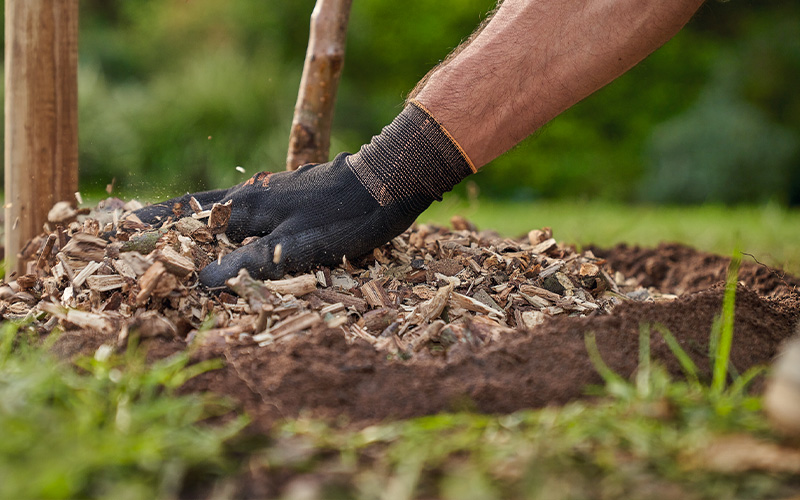
In summary, compost is used to enrich soil with nutrients, while mulch is used to protect and improve the health of soil by conserving moisture, suppressing weeds, and regulating temperature.
SHREDDING GARDEN WASTE
Whether your using a shredder for compost or mulch, using a shredder to process garden waste can greatly reduce its volume by up to 75 percent, allowing for more surface area to be exposed, increasing oxygenation and speeding up the decomposition process. By shredding, you are creating a more favorable environment for the composting process, leading to a faster conversion of garden waste into compost.
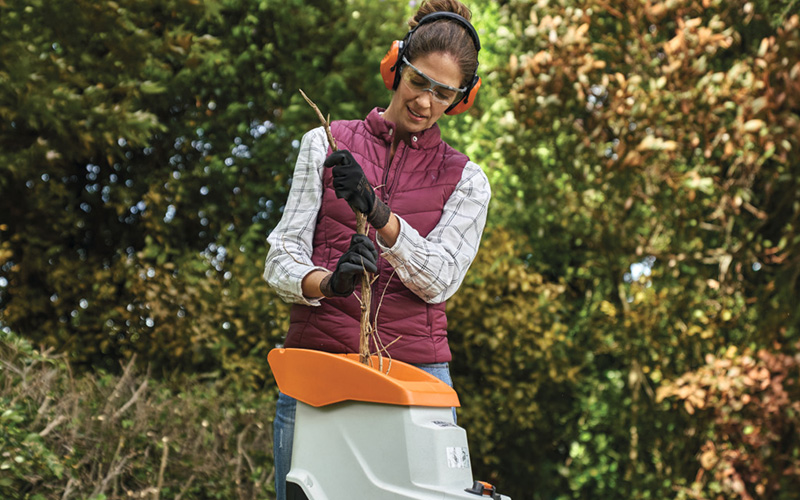
WHAT MAKES GOOD COMPOST?
Achieving a nutrient-rich compost requires the proper balance of four key components: green matter, brown matter, oxygen, and water.
GREEN MATTER
Green matter for compost refers to organic materials that are rich in nitrogen, such as vegetable scraps, grass clippings, and plants. These materials contribute to the active decomposition process of compost and provide the necessary nitrogen to support the growth of microorganisms in the compost pile. However, too much green matter can result in unpleasant odours and a rotting pile instead of composting. Be mindful of the balance with brown matter (carbon-rich material like fallen leaves, hedge clippings, and shredded branches) as green matter aids in oxidizing brown matter.
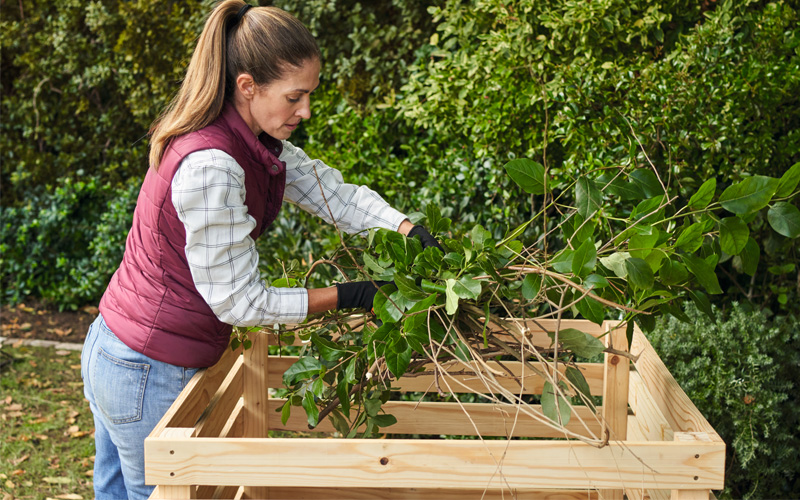
BROWN MATTER
Brown matter in compost typically consists of carbon-rich organic materials like fallen leaves, hedge clippings, shredded branches, and similar dry plant material. These materials provide Carbon, a source of energy, to the compost pile and are essential to the success of the composting process. But an excess of brown matter will slow down the composting process and delay its readiness for use in the garden.
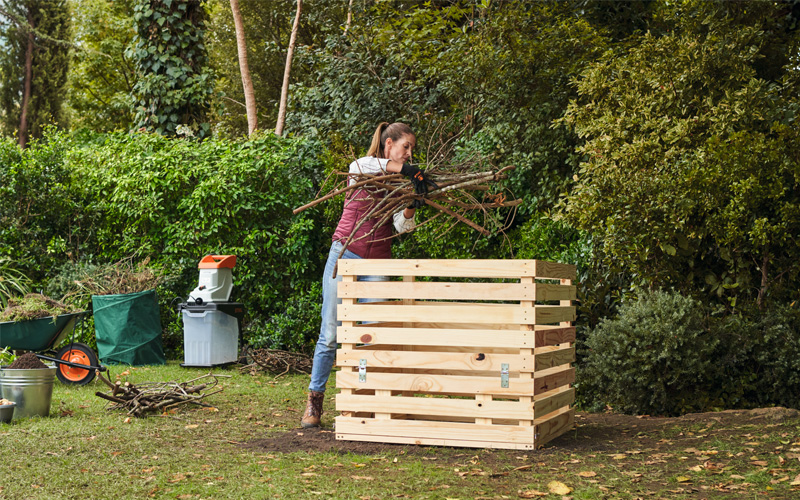
WATER
Water is an essential aspect of the composting process. It helps to keep the organic matter moist and provides the necessary environment for the microorganisms to thrive. Too much water, however, can cause the pile to become waterlogged and soggy, which can lead to unpleasant odours and slow down the composting process. Too little can also be problematic, causing the pile to become dry and making it difficult for the microorganisms to break down the organic matter. Maintaining the right balance of water in the compost pile is crucial for a successful composting process. Shredding materials prior to adding them to the pile can improve water absorption and enhance decomposition.
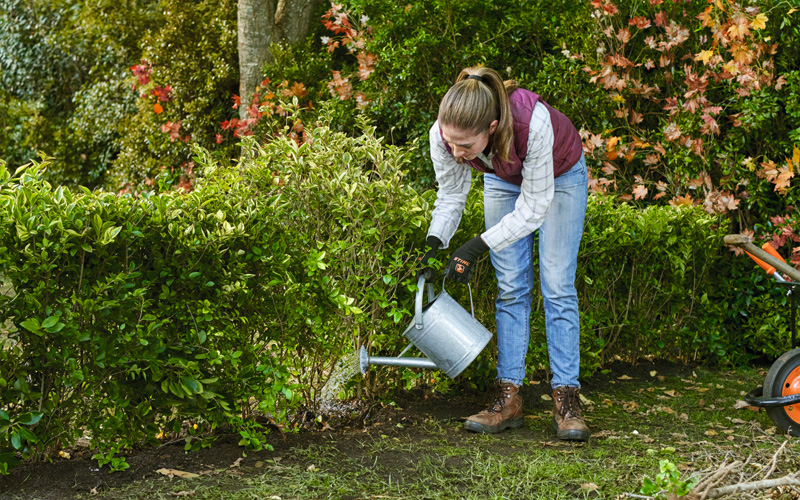
OXYGEN
Oxygen helps to regulate the temperature and provides a healthy environment for the microorganisms that decompose the organic matter. When the compost bin or pile has enough oxygen, the microorganisms thrive, breaking down the organic matter into compost faster. Without enough oxygen, the composting process slows down and can produce unpleasant odours. To maintain a proper balance of oxygen in your compost bin or pile, it is important to turn it regularly and mix the materials to ensure that air can circulate throughout. To maintain optimal oxygen levels, it is best to avoid containers or tubs with sides and not to position the pile in a trench. Shredding materials beforehand can also aid in airflow and minimize the need for frequent turning.
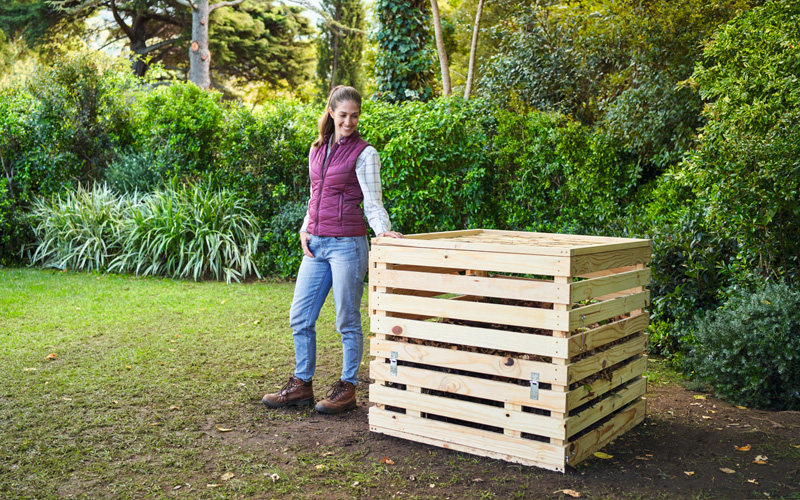
ADDING TO YOUR COMPOST: DO'S AND DONT'S
Be mindful of what you add to your compost bin or pile. Avoid materials that can attract pests, cause issues, and contain harmful chemicals and materials that cannot decompose easily. Here’s a quick list of what you should and should not add in your compost:
DO ADD:
- Tea leaves
- Ground coffee
- Fruit and vegetable scraps
- Onion skins
- Egg shells
- Weeds
- Saw dust
- Newspapers
- Hay and straw
- Grass clippings
- Leaves and plant trimmings
- Wood chips or sawdust (from untreated wood)
- Manure from rabbits, horses, chickens, or cows
DON'T ADD:
- Bread
- Grease and oils
- Metal, glass or plastic
- Large branches
- Anything artificial
- Coal or charcoal ash
- Pressure-treated or painted wood (may contain harmful chemicals)
- Diseased plants or weeds with seeds
- Treated paper like glossy magazines
- Pet waste (can contain parasites and bacteria)
- Meat, bones, and dairy products (these can attract pests and produce unpleasant odours)
HOW TO MAKE COMPOST AT HOME
Creating garden compost at home can be an easy and cost-effective way to fertilise your garden! Follow these steps to make your own compost:
STEP 1: CHOOSE A LOCATION
Select an area that is in the shade, well-drained, and suitable for earthworms. Ensure that the area is accessible, but not in a place where the smell or leaching liquids will cause trouble. A little bit of sunlight is also recommended.
STEP 2: BUILD A COMPOST BIN OR PILE
You can either purchase a compost bin, build one, or create a compost pile in an open space.
To start composting, begin by laying down a layer of rough, brown materials such as fallen leaves, straw, or wood chips to improve drainage and prevent the pile from becoming waterlogged.
STEP 3: START ADDING YOUR WASTE MATERIALS
Add a layer of green matter, followed by brown matter to your compost bin or pile. Alternating between green and brown matter will help balance the nitrogen and carbon levels, providing the right conditions for decomposition. Add a light sprinkle of water after each layer before you add the next.
If you have some compost or soil handy, sprinkle some of this on top to give it a boost. This will also reduce any bad smells, which are usually noticed in the early days of a new compost pile.
STEP 4: STIR AND TURN YOUR COMPOST
Regularly turn the compost to aerate it and speed up decomposition. Use a garden fork or spade. Turning the garden compost every few weeks helps to mix the materials and maintain moisture levels, essential for effective composting. Turn the compost pile every few weeks to allow the air to penetrate the organic matter.
STEP 5: ADD YOUR COMPOST TO YOUR GARDEN
Your compost will be ready for use when you see a rich, dark, soil-like substance that is spongy in texture at the bottom of your pile. Once ready, it’s time to add it to your garden’s soil. Spread a layer of compost around your plants, mixing it lightly into the topsoil. Compost can be used in flower beds, vegetable gardens, and even around trees and shrubs. Regularly adding compost enhances soil fertility and provides essential nutrients for thriving plants, creating a lush, vibrant garden.
STEP 6: REPEAT THE PROCESS
Keep adding layers of green and brown matter, alternating with water and compost or soil, until the pile reaches the desired height. Make sure to turn the pile regularly to ensure proper air circulation and decomposition.
Remember, a good compost can take anywhere from three months to several months, so it’s never too early to make a start.
ENJOY YOUR THRIVING GARDEN
Composting transforms garden waste into valuable, nutrient-rich soil material. By understanding the differences between compost and mulch, key composting components, and following best practices for adding materials and creating your own compost, you can create a high-quality natural fertiliser easily! For top-quality outdoor equipment and expert advice, visit STIHL SHOP. Our range of shredders and chippers, gardening tools, and gardening equipment will help you achieve the best results for your garden.





